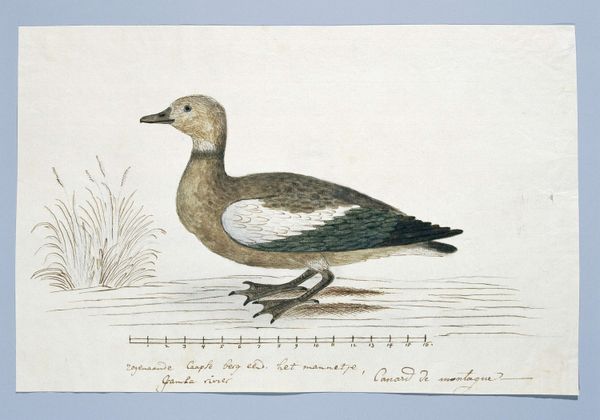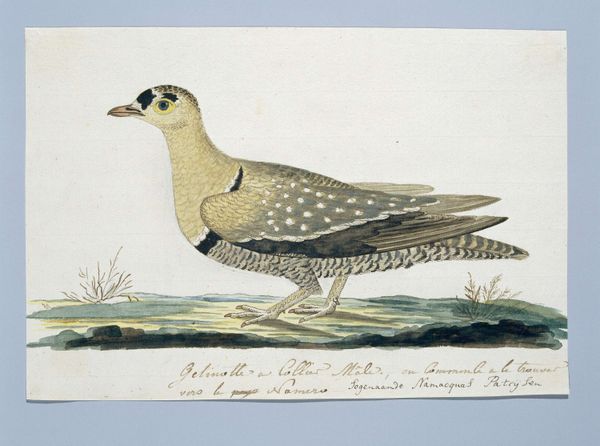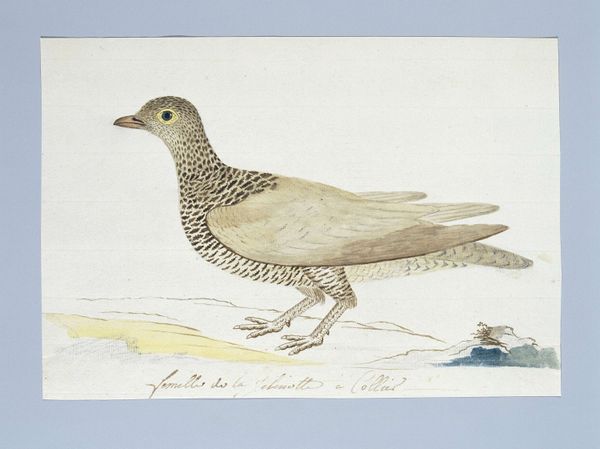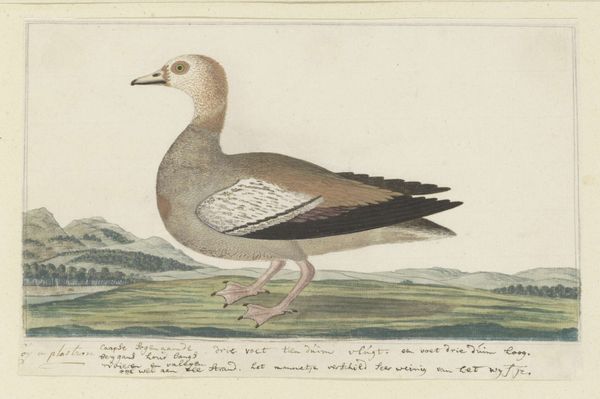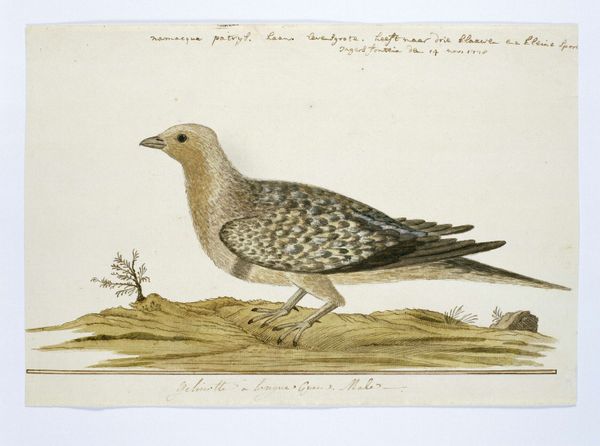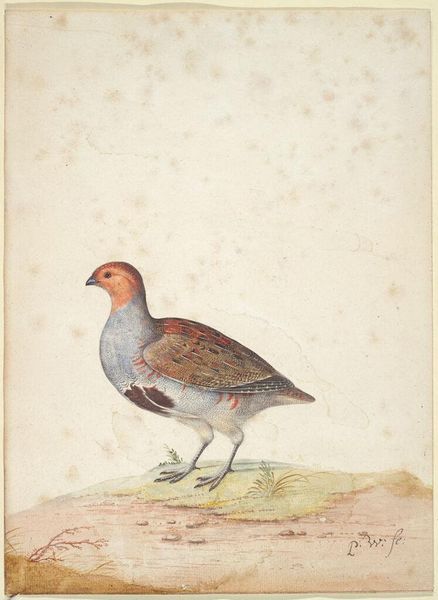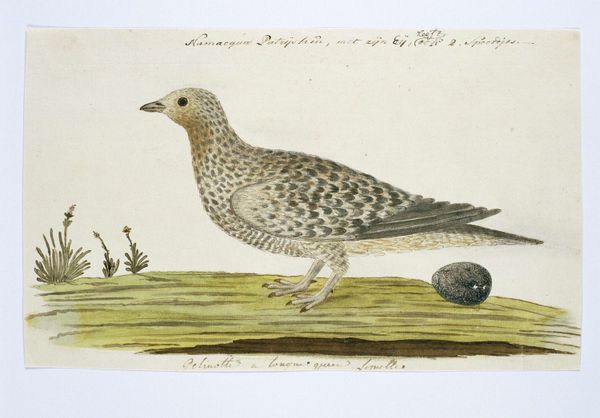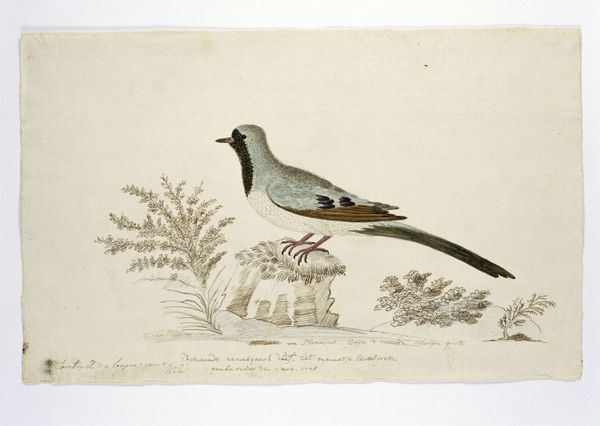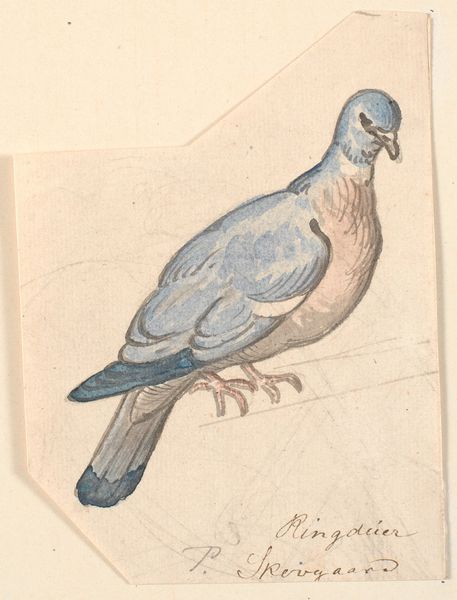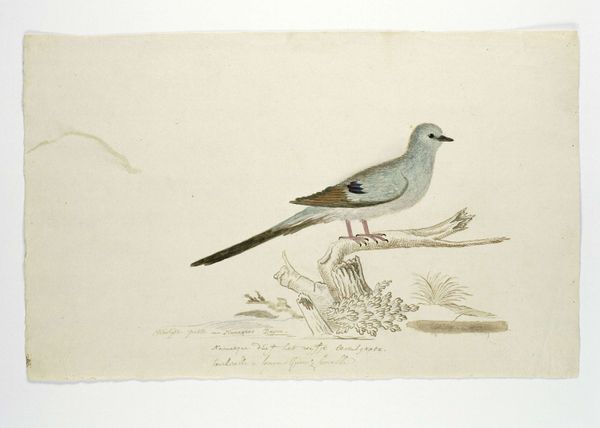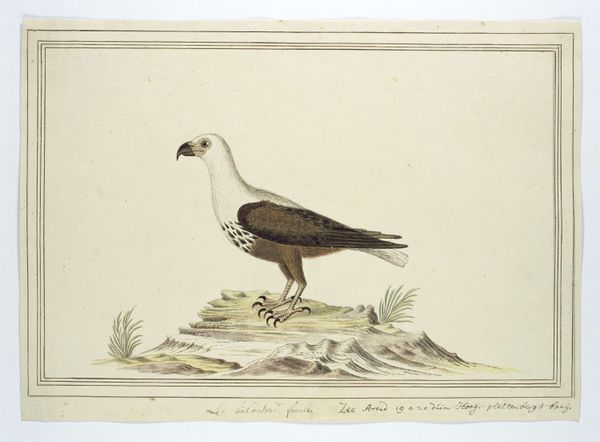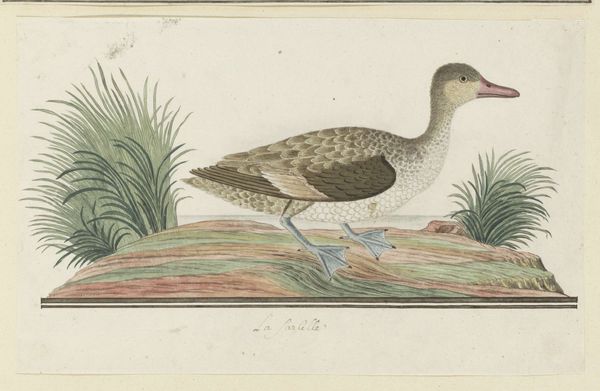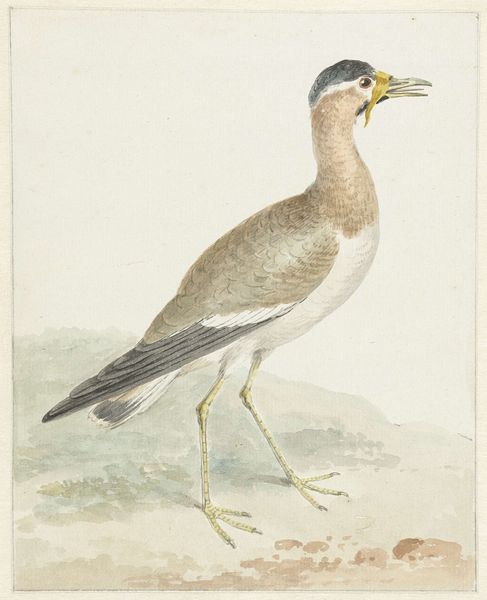
drawing, watercolor, pencil
#
drawing
#
water colours
#
landscape
#
figuration
#
watercolor
#
coloured pencil
#
pencil
#
naturalism
#
watercolor
Dimensions: height 660 mm, width 480 mm, height 213 mm, width 340 mm, height mm, width mm
Copyright: Rijks Museum: Open Domain
Robert Jacob Gordon created this watercolor of a Namaqua Sandgrouse in the late 18th century, a period of intense scientific exploration intertwined with colonial expansion. The image’s meaning is constructed through the visual codes of natural history illustration: a detailed, objective rendering meant to catalog and classify the natural world. Yet, it's important to remember that this was made in the context of the Dutch Cape Colony, where the European gaze was actively mapping and claiming territory. Gordon, a military commander, was also an amateur naturalist whose work contributed to a growing body of knowledge used to legitimize colonial control. This image, therefore, isn't simply a neutral depiction of a bird. It's a product of its time, shaped by the social and institutional forces of colonialism and scientific ambition. To fully understand it, we need to delve into historical archives, travel logs, and scientific treatises of the period, acknowledging that our understanding of art is always contingent on its complex social context.
Comments
No comments
Be the first to comment and join the conversation on the ultimate creative platform.
